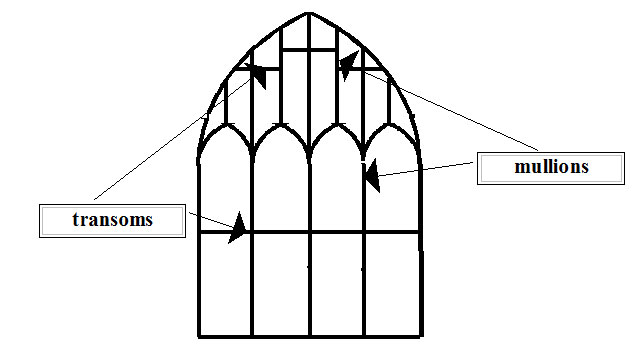A uniquely English style
By the time the re-building programme at St.Wulfram's was ready
to tackle the great East window, the fashion of sinuous curves of
the Decorated period had given way to the uniquely English
Perpendicular style. This had swept the country and was to hold
sway in the land for over two centuries.
The Perpendicular style has advantages of ease of construction
and economy and it has been suggested that, following the scarcity
of labour following the Black Death of 1348, this would be a
powerful reason for adopting a style simpler than the
Decorated.
As the name Perpendicular suggests, vertical lines are
prominent. These appear as continuations of the mullions into the
tracery together with further mullions rising from the points of
the arches above the lights. Some of them continue the line right
up to the window arch. The result is to create half-lights in the
tracery, in effect doubling the number of the lights as in the
four-light window sketched below.
Horizontal lines, as well as the vertical, are an important
feature of the Perpendicular style. Horizontal tracery bars called
transoms may cut across the whole width of the window or, in the
tracery, tie together several mullions. These transoms serve to
divide up what might seem excessively tall lights or
half-lights.
Where horizontals and verticals occur together a grid is formed
and it is this feature of English Perpendicular which, for Pevsner,
"is really what distinguishes it from all its predecessors".
